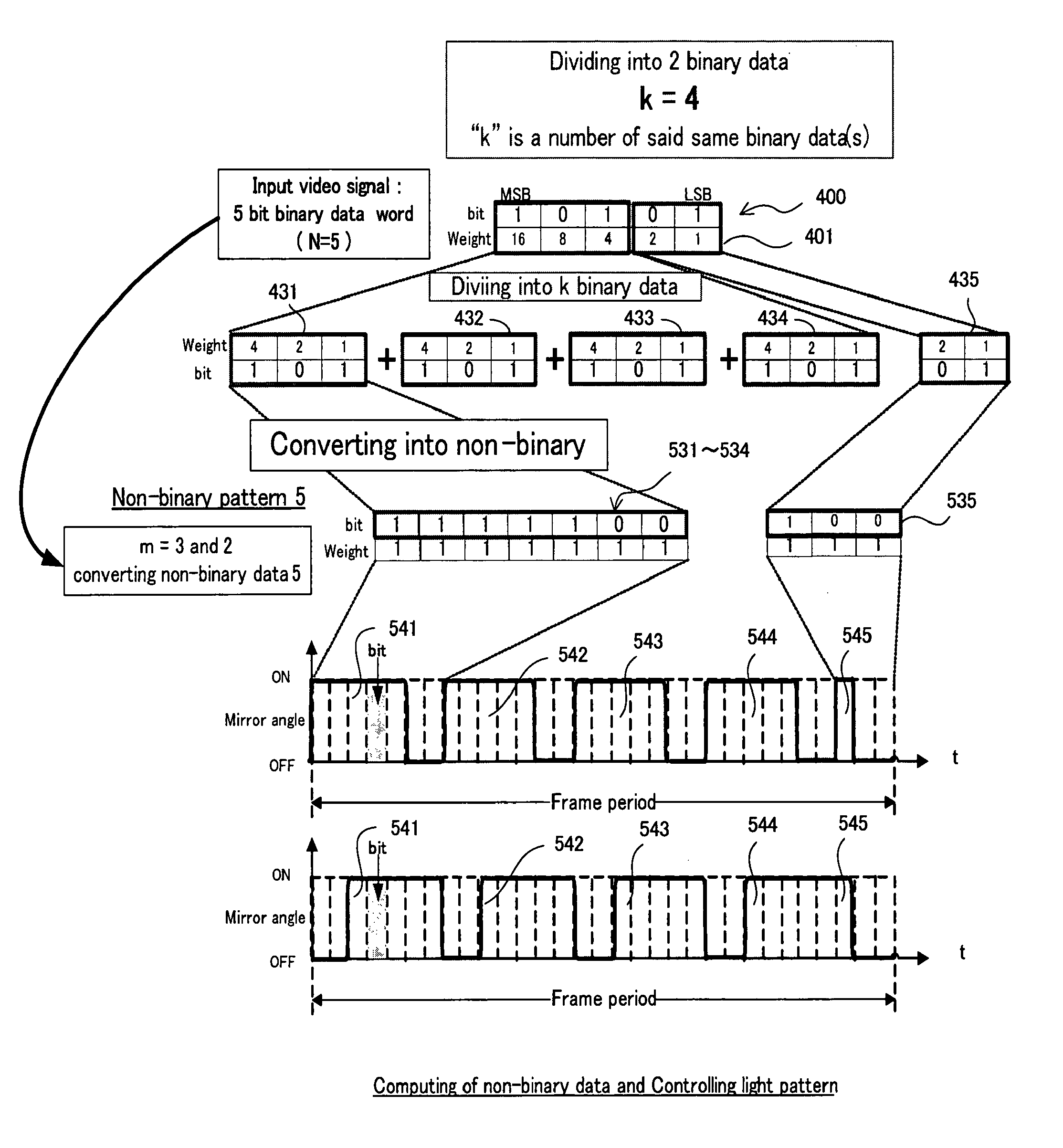Method for reducing temporal artifacts in digital video systems
a technology of digital video and artifacts, applied in the field of projection display systems, can solve the problems of limited image display quality, adverse effects on image quality, and limited quality of image displays, and achieve the effect of reducing or reducing artifacts, reducing or eliminating artifacts
- Summary
- Abstract
- Description
- Claims
- Application Information
AI Technical Summary
Benefits of technology
Problems solved by technology
Method used
Image
Examples
Embodiment Construction
[0079]Reference is now made to the above listed Figures for the purpose of describing, in detail, the preferred embodiments of the present invention. The Figures referred to and the accompanying descriptions are provided only as examples of the invention and are not intended in anyway to limit the scope of the claims appended to the detailed description of the embodiment. Specifically, exemplary embodiments of the present invention are described below by referring to FIGS. 6 through 21.
[0080]FIG. 6 is a functional block diagram for showing an exemplary configuration of a projection display apparatus that implements a control method according to the present invention. FIG. 7 is a side cross sectional view of an exemplary configuration of a pixel unit of the spatial light modulation device implemented in a projection display apparatus.
[0081]Referring to FIG. 6 for a projection display apparatus 100 that includes a spatial light modulation device (SLM) 200, a control apparatus 110, a p...
PUM
 Login to View More
Login to View More Abstract
Description
Claims
Application Information
 Login to View More
Login to View More - R&D
- Intellectual Property
- Life Sciences
- Materials
- Tech Scout
- Unparalleled Data Quality
- Higher Quality Content
- 60% Fewer Hallucinations
Browse by: Latest US Patents, China's latest patents, Technical Efficacy Thesaurus, Application Domain, Technology Topic, Popular Technical Reports.
© 2025 PatSnap. All rights reserved.Legal|Privacy policy|Modern Slavery Act Transparency Statement|Sitemap|About US| Contact US: help@patsnap.com



